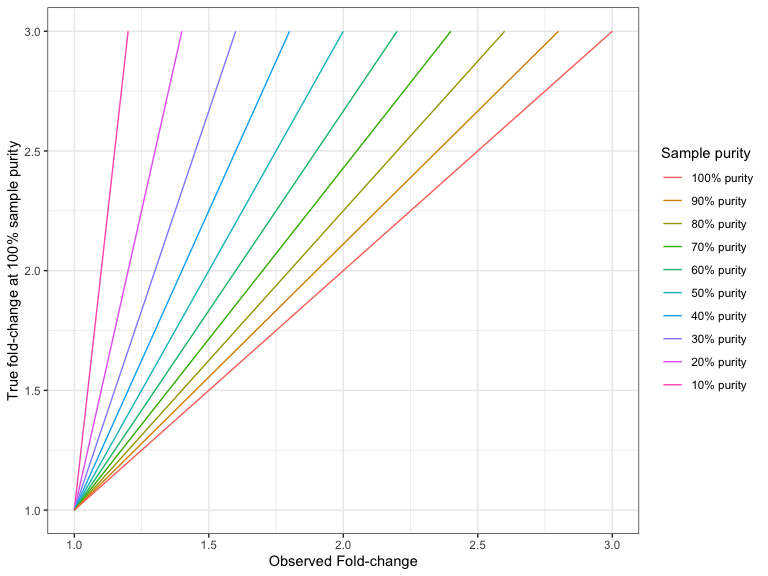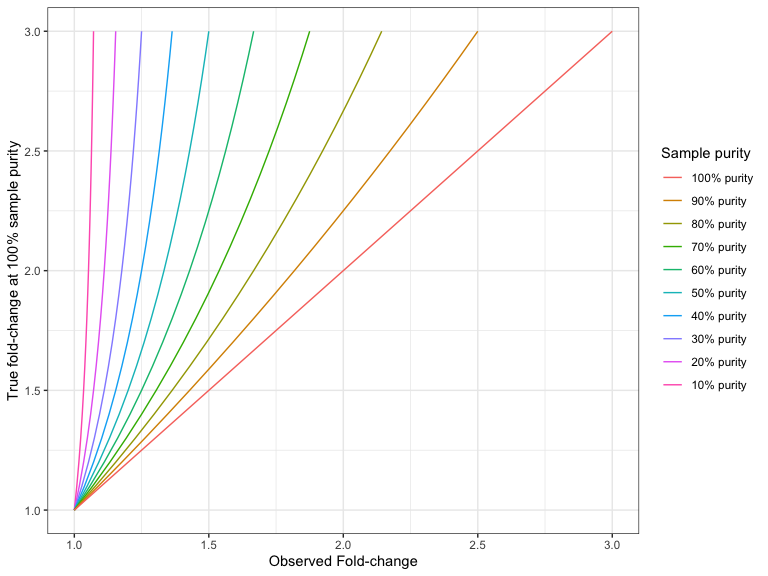How to interpret fold-changes when the sample purity is not 100%
If your sample purity is less than 100%, it is necessary to take that into account when interpreting the fold-change values.
Given a sample purity of
For example, if the sample purity is 40%, and you have observed an amplification with a fold-change of 3, then the fold-change in the 100% pure sample would have been:
For a deletion the formula for converting an observed (absolute) fold-change to the actual (absolute) fold change is:
For example, if the sample purity is 40%, and you have a deletion with an absolute fold-change of 1.25, then the absolute fold-change in the 100% pure sample would have been:
Figures 31.27 and 31.28 shows the 'true' fold changes for different observed fold-changes at different sample purities.

Figure 31.27: The true amplification fold-change in the 100% pure sample, for different observed fold-changes, as a function of sample purity.

Figure 31.28: The true deletion fold-change in the 100% pure sample, for different observed fold-changes, as a function of sample purity.
